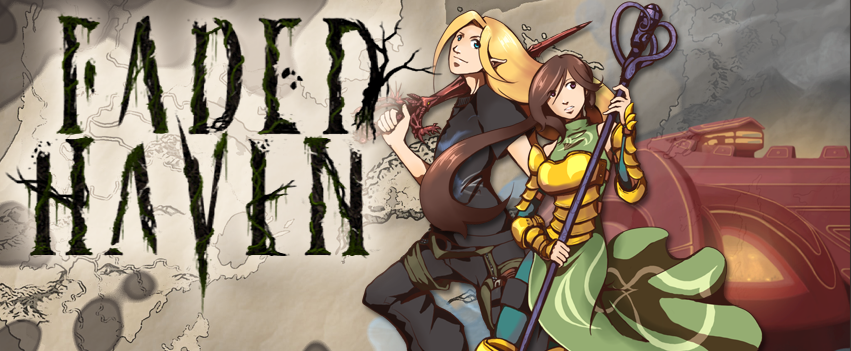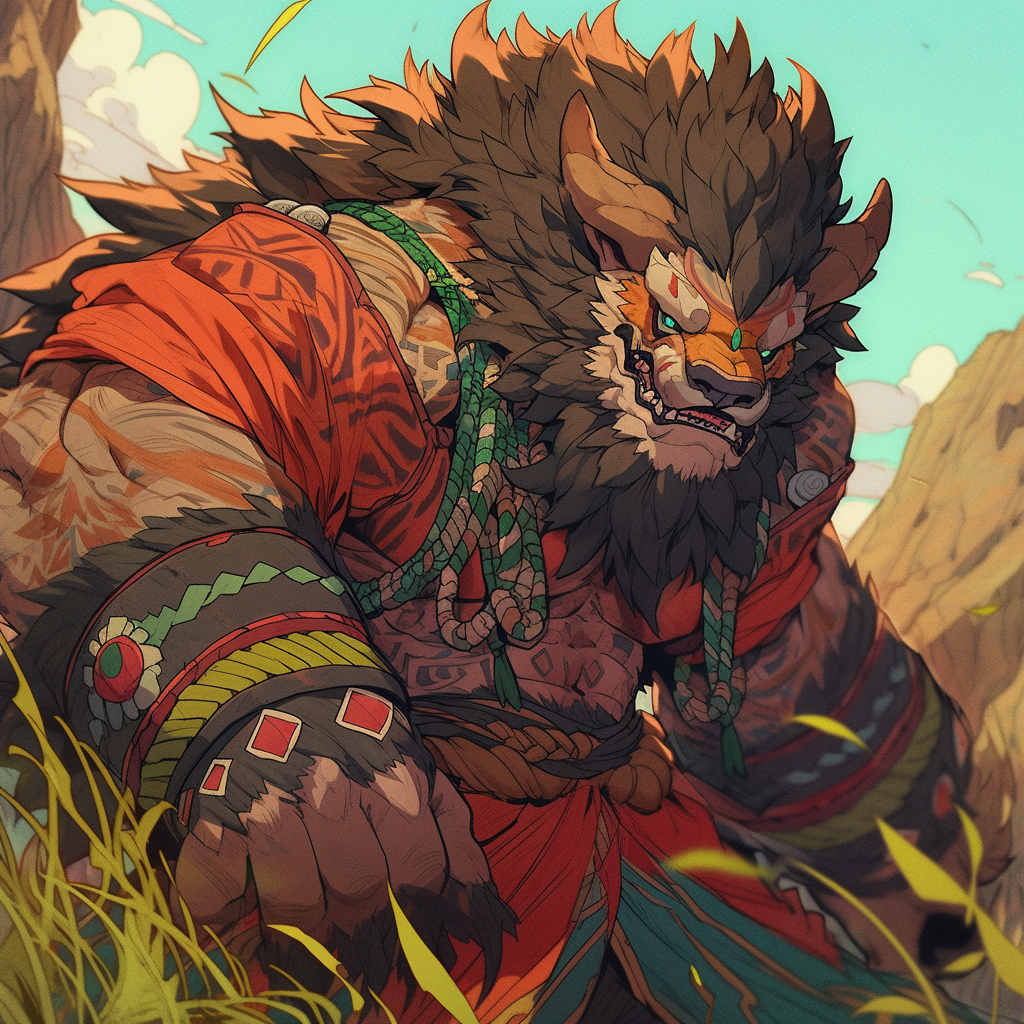Bugbears
A race of beast like humanoids.They have a village in Alps
Basic Information
Anatomy
Bugbears are burly humanoid creatures known for their formidable strength and imposing stature. They typically stand between 1.75 and 2.10 m tall, with broad shoulders and muscular builds. Their bodies are covered in coarse fur, ranging in color from light brown to black, which provides them with some natural camouflage in forested environments. They have very thick and long manes.
Bugbears have strong arms ending in powerful hands with sharp claws, which they use both for hunting and combat. Their legs are sturdy and well-suited for navigating rough terrain with ease. Their faces are bestial filled with sharp teeth, giving them a fearsome appearance. The lower tusks, for males, continue to grow their whole lives, eventually sticking way out of their mouth.
Some bugbears have horns while others don't. The reason is unknown. However these horns aren't very useful for combat as they are comparatively soft.
In terms of skeletal structure, bugbears have a robust frame with a sturdy spine and thick bones. They possess a bipedal gait, walking on two legs like humans, but they are also capable climbers.
Biological Traits
They exhibit sexual dimorphism, with males typically larger and more robust than females.
Growth Rate & Stages
Bugbear infants are born relatively large and develop quickly compared to humans. They are dependent on their parents for nourishment and protection during this stage, which lasts for approximately 2 to 3 years.
As bugbear young mature, they begin to develop their physical strength and hunting skills. This stage, spanning from around 3 to 10 years of age, involves extensive learning from their parents and other members of their community.
Bugbears reach their prime adulthood between the ages of 10 and 30 years. During this period, they experience significant physical growth and honing of their combat abilities. Many bugbears establish themselves as hunters, warriors, or farmers within their tribe during this time. From around 30 years of age onward, bugbears are considered fully mature.
As bugbear young mature, they begin to develop their physical strength and hunting skills. This stage, spanning from around 3 to 10 years of age, involves extensive learning from their parents and other members of their community.
Bugbears reach their prime adulthood between the ages of 10 and 30 years. During this period, they experience significant physical growth and honing of their combat abilities. Many bugbears establish themselves as hunters, warriors, or farmers within their tribe during this time. From around 30 years of age onward, bugbears are considered fully mature.
Ecology and Habitats
In the rugged terrain of the Alps, bugbears thrive amidst dense forests and rocky slopes. They've established villages where they hunt, cultivate tea, and raise cattle, relying on the surrounding wilderness for resources and protection.
Dietary Needs and Habits
Bugbears are omnivorous creatures, consuming a diet consisting of both meat and vegetation. They hunt wild game such as deer and boar in the forests surrounding their villages, using their strength and stealth to ambush prey. Additionally, they forage for edible plants, berries, and roots to supplement their diet.
To store and protect their food sources, bugbears employ various methods such as drying and smoking meat to preserve it for longer periods. They also utilize natural storage methods like underground root cellars or hidden caches in the forest to safeguard their food from predators and other threats.
To store and protect their food sources, bugbears employ various methods such as drying and smoking meat to preserve it for longer periods. They also utilize natural storage methods like underground root cellars or hidden caches in the forest to safeguard their food from predators and other threats.
Behaviour
They are fiercely territorial and protective of their families and villages, displaying aggression towards any perceived threats.
Among their own kind, bugbears engage in various social interactions, including hunting together in packs and participating in communal rituals and gatherings. Respect for strength and prowess is deeply ingrained in bugbear culture, with displays of dominance and physical prowess often happening during celebrations. Not many members of other races have gained their trust. But those who have can attest that they are actually a kind and loving race.
Among their own kind, bugbears engage in various social interactions, including hunting together in packs and participating in communal rituals and gatherings. Respect for strength and prowess is deeply ingrained in bugbear culture, with displays of dominance and physical prowess often happening during celebrations. Not many members of other races have gained their trust. But those who have can attest that they are actually a kind and loving race.
Additional Information
Social Structure
Bugbears live in a small, close-knit community with a hierarchical social structure. The village elder holds authority and makes decisions for the group. The elder is often chosen based on age, strength, or wisdom. Younger bugbears are tasked with learning skills essential for survival, while older members serve as mentors or leaders in specific roles such as hunting. Cooperation and loyalty to the group are highly valued, and individuals who defy or threaten the social order may face consequences ranging from ostracism to expulsion.
Facial characteristics
Bugbears have bestial faces of fearsome appearance. Their faces typically feature a broad, flat nose, small, deep-set eyes, and prominent brows. They possess large ears that enhance their hearing capabilities, and some individuals may have horns. The older males have lower tusks protruding prominently from their mouths.
Average Intelligence
Bugbears possess average intelligence comparable to that of humans. While they may not excel in academic pursuits, they demonstrate a keen understanding of their environment, effective problem-solving skills, and the ability to communicate and cooperate with others within their community.
Symbiotic and Parasitic organisms
Bugbears face challenges from parasites like ticks or fleas, which they must manage to maintain their health and well-being.
Civilization and Culture
Naming Traditions
Bugbears typically follow simple and practical naming traditions, often drawing inspiration from their natural surroundings, physical characteristics, or significant life events. Names may reflect traits like strength, agility, or ferocity, as well as elements of the environment such as trees, animals, or natural features.
Beauty Ideals
Beauty ideals among bugbears are often tied to traits associated with strength, resilience, and physical prowess. A bugbear's attractiveness is typically measured by their muscular build and imposing stature rather than conventional standards of beauty. Thick fur, sharp claws, and prominent tusks are admired features.
Relationship Ideals
Bugbears mate for life. They find their loved partner and spend their whole life by their side. They usually have a nice family with 2 to 5 children.
Average Technological Level
Bugbears have achieved a modest level of technological advancement, primarily focused on practical tools and structures suited to their lifestyle in the Alps.
Major discoveries include the development of simple agricultural techniques for cultivating tea. Additionally, bugbears have mastered the art of leatherworking, utilizing hides from hunted animals to create clothing, armor, and other useful items. Commonly used items among bugbears include wooden weapons such as spears, clubs, and bows for hunting and defense, as well as pottery and woven baskets for storing and transporting goods. They also employ basic cooking utensils and equipment for preparing meals, often utilizing fire for cooking and warmth.
Major discoveries include the development of simple agricultural techniques for cultivating tea. Additionally, bugbears have mastered the art of leatherworking, utilizing hides from hunted animals to create clothing, armor, and other useful items. Commonly used items among bugbears include wooden weapons such as spears, clubs, and bows for hunting and defense, as well as pottery and woven baskets for storing and transporting goods. They also employ basic cooking utensils and equipment for preparing meals, often utilizing fire for cooking and warmth.
Major Language Groups and Dialects
They understand Common and Goblin language. They usually use a strange mix of both in their everyday lives.
Common Dress Code
They tend to wear colorful, loose clothing with lots of motives and decorations.
Interspecies Relations and Assumptions
Bugbears generally maintain a cautious and reserved attitude towards other sapient species, particularly humans and elves, due to their history of conflict. Elves are sometimes regarded with a mixture of curiosity and wariness, as bugbears perceive them as mysterious and elusive beings. However, bugbears are not inherently hostile towards other races and may be willing to establish trade or alliances under favorable circumstances. They are simple rather teritorial and cautious.
D&D statistics
Bugbear Traits
Your character is a strong and kind mountain dweller.Ability Score Increase
Your Strength score increases by 2, and your Dexterity score increases by 1.Alignment
Bugbears tend to be Neutral or good in most instances.Size
Your size is Medium.Speed
Your base walking speed is 30 feet. (9m)Elemental afinity
Bugbears have no particular affinity to a specific element.Languages
You can read speak and write Common and Goblin language.Powerful Build.
You count as one size larger when determining your carrying capacity and the weight you can push, drag, or lift.Sneaky.
You are proficient in the Stealth skill.Surprise Attack.
If you hit a creature with an attack roll, the creature takes an extra 2d6 damage if it hasn’t taken a turn yet in the current combat.Brute.
A melee weapon deals one extra die of its damage when the bugbear hits with it
Lifespan
60 - 70 years
Average Height
1.75 to 2.10 m
Average Weight
150 to 250 kilograms
Geographic Distribution




Comments